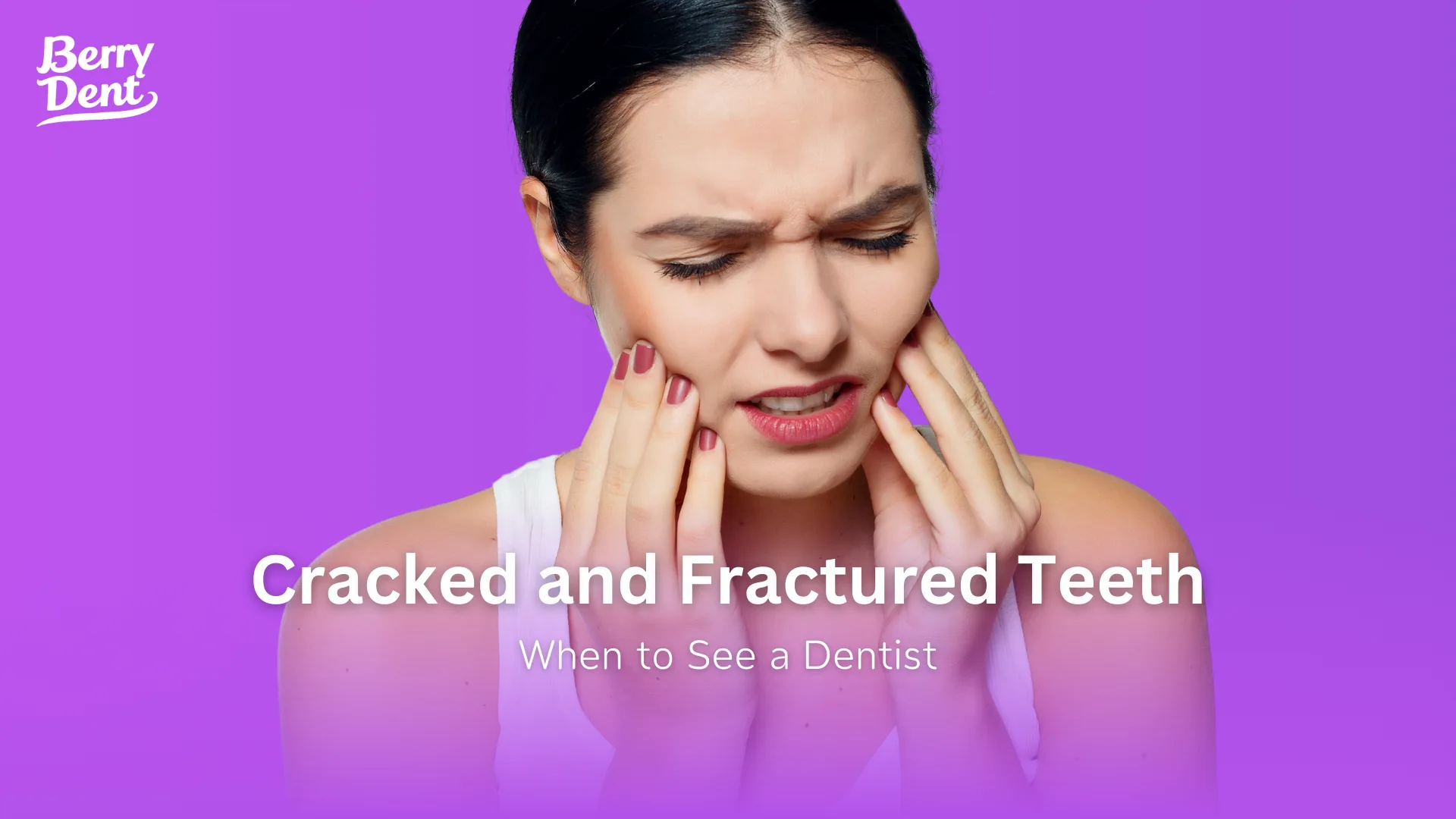Have you ever experienced a sudden, sharp pain in your tooth while chewing? Or maybe you’ve noticed unexplained tooth sensitivity. These could be warning signs of a cracked or broken tooth. These are common dental problems that often go unnoticed. Berry Dent will guide you through the symptoms, how to recognize them, and when it’s time to see a dentist.
What are the Symptoms of a Cracked or Broken Tooth?
Although slightly different, cracked and broken teeth can both cause significant problems. A cracked tooth (cracked tooth) refers to a small fissure on the tooth’s surface, often invisible to the naked eye. A broken or fractured tooth (fractured tooth) is when the tooth structure breaks into pieces, ranging from a small chip to a complete fracture extending to the root.
How to Spot the Signs of a Cracked or Broken Tooth
You can easily monitor for signs of a cracked or broken tooth. Look for these symptoms:
- Sharp pain when chewing: Especially when eating hard or sticky foods. This is an early warning sign that a tooth might have a crack.
- Tooth sensitivity: Feeling sensitivity when consuming hot, cold, or sweet items.
- Intermittent tooth pain: Pain that comes and goes, with varying intensity.
- Visible crack on the tooth: You might occasionally notice a small crack on the tooth surface.
- Tooth swelling: If left untreated, an infection can develop, leading to swelling.
- Swollen gums: Swollen gums might indicate an infection at the tooth’s root, potentially caused by a crack or fracture.
When to Seek Immediate Dental Care
If you experience any of the following symptoms, don’t hesitate to seek immediate dental attention:
- Severe tooth pain
- Swelling of the tooth or gums
- Fever
- Inability to chew food
- A visible crack or fracture
How Will a Dentist Treat a Cracked or Broken Tooth?
Treatment depends on the severity of the damage:
- Filling: For minor cracks, a dentist might use a filling to prevent the crack from spreading.
- Crown: If the tooth is fractured or has a large crack, a crown might be recommended to protect the tooth from further damage.
- Root canal: If the crack extends to the pulp (nerve) of the tooth, root canal treatment might be necessary.
- Extraction: In severe cases where the tooth is damaged beyond repair, extraction might be the only option.
How to Prevent Cracked or Broken Teeth
Taking preventive measures can help reduce the risk of cracked or broken teeth:
- Avoid biting or chewing on hard objects: This includes ice, bones, and hard fruit pits.
- Wear a mouthguard: Especially during contact sports or activities where there’s a risk of impact.
- Maintain good oral hygiene: Brush your teeth at least twice a day, floss regularly, and use mouthwash.
- Regular dental checkups: Visit your dentist for checkups and cleanings at least twice a year.
Don’t let a cracked or broken tooth become a major problem. Pay attention to any symptoms and promptly consult a dentist if you notice anything unusual. This allows for timely treatment and helps maintain good oral health. Most importantly, focus on prevention by practicing good oral hygiene and using an effective toothpaste like Berry Dent, which combines the benefits of natural herbs and fluoride for optimal cavity protection.


